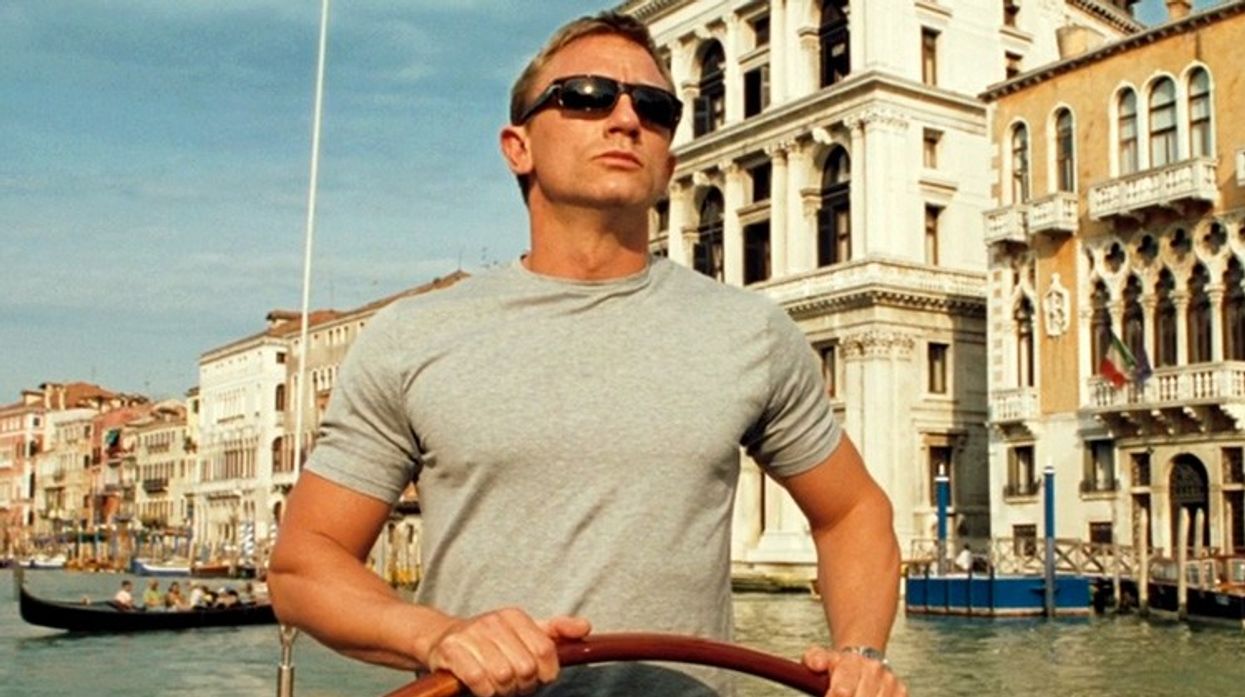How Phil Meheux Lights the Climactic Scene in 'Casino Royale'
It has been 15 years since Casino Royal hit theaters, and we will never shut up about the amazing cinematography of this film.

I think it is safe to say that Casino Royal is a lot of people's favorite Bond movie. From the story to the action and the cinematography, what is not to love about Daniel Craig’s debut Bond film?
Based on the first James Bond book that was released in 1953, Casino Royale is a reboot, showing Bond at the beginning of his career as an M16 agent, and it stays true to the original novel. To celebrate the 15th anniversary and the upcoming release of Craig’s final Bond film, No Time to Die, CookeOpticsTV sat down with cinematographer Phil Meheux to talk about how he lit some of the most iconic action sequences from Casino Royale. Check out the full video below.
Our introduction to Bond in Casino Royale will forever be one of our top 10 best introductions of a character in the film ever, but the introductions of a possible Bond girl are equally stunning. When we first meet Solange (Caterina Murino) in the Bahamas, we get a shot of Bond rising out of the ocean that is reflecting the sunlight. The shot was intended to be focused mostly on Solange and the horse she is on, but the framing of Craig coming out of the glistening water was too good to not put in the film when the crew saw how killer the shot was.

Meheux says that shot was a happy accident. When reflecting on his time working on Casino Royale, Meheux said that many of the iconic moments of the film were never storyboarded. Instead, the crew thought of the set pieces and slightly reframed the story to fit the overall tone of the film.
Meheux’s approach to the film was to get the best shot possible no matter the location. Of course, location will always have an impact on how a scene is framed, but Meheux has learned to take everything as you move along the filmmaking process. Even on sets that are constructed on a stage, the job of a cinematographer is to make it look interesting for the film.
A perfect example of making a scene shot on a stage look interesting is the final action sequence in Casino Royale. The story finishes with Bond in a shoot-out between gunmen who have captured the double agent, Vesper (Eva Green), in a Venice building that is under construction. At one point in the shoot-out, the inflatable balloons that hold up the building are shot, and the building begins to crumble into the Grand Canal.
For obvious reasons, this scene couldn’t take place in Venice, but luckily there was already a waterproof stage that was built for another Bond film, You Only Live Twice, back in 1966.

The stage at Pinewood Studios was the only stage that the crew could flood successfully. The only problem was trying to figure out how to get a building to tilt and go into the water while making sure everything is lit perfectly.
The crew built a complicated rig that would tilt and sink 12 feet into the water. Since the building is under construction in the story, there are no sources of light other than “natural light” coming from the skylines that Meheux asked the design team to add to the building so there would always be a constant light source. The trouble Meheux found with the skylights was that there were only 10 feet from the skylight to the roof of the set they were shooting in. Meheux placed rows of dino lamps, a set of 12 lights in a frame, over the skylight, then placed a silk over the skylight to eliminate any shadows the light cast.

Because of this 50-foot light source, the light remained the same no matter how much the building tilted or sank 12 feet. Since the building wasn’t dropping down very far, more light was able to enter the building and illuminate under the water enough to not add any more lights for the wide and medium shots.
The camera had to be tied down to the set to mimic the sinking and tilting of the building and build the suspense of the moment. It was also done to protect the camera from any unwanted movement that could damage the camera’s mount. While there was no storyboard for this scene, everything was thought out carefully and thoroughly to bring a vision to life.
The cinematography in the recent Bond films has always been breathtaking, and it all started with Casino Royale. The film’s tone is heavily established by how the action and characters are framed. Even in moments where there is no light, Meheux and the 007 teams know where to mimic sunlight to make the shot feel authentic yet stylized.
As we prepare for No Time to Die to hit theaters, I highly recommend sitting down and rewatching Casino Royale tonight, enjoying a Vesper Martini, and appreciating the cinematic beauty that is expected from a Bond film.
What are your favorite shots from Casino Royale? Let us know in the comments below why!
Source: CookeOpticsTV











